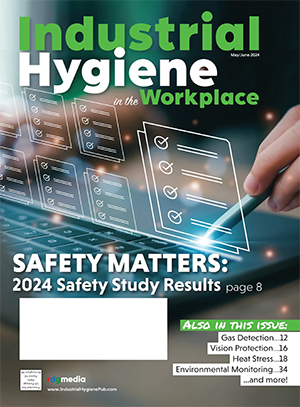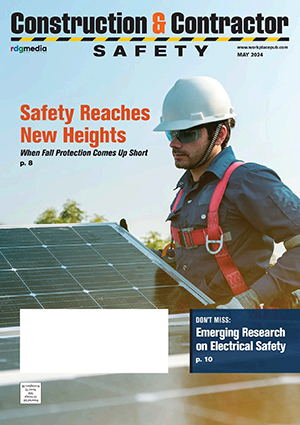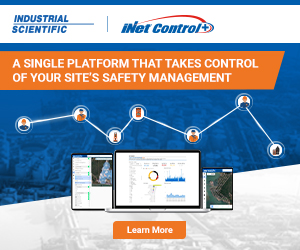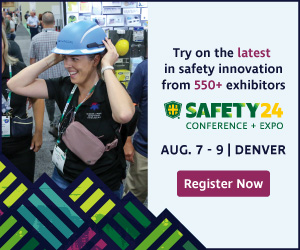The Future of Silica Monitoring: Not What It Used to Be
By: Patrick Bescoby, Contributor
Thanks to major advancements in real-time technology, protecting workers from dangerous silica dust just became simple, easy and much more effective. With new silica monitoring technology, you can now reduce costs, improve business efficiency and save lives—all in real time.
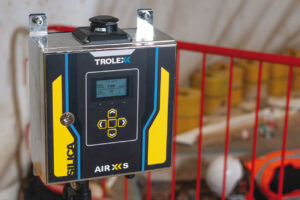
The Air XS Silica Monitor from Trolex uses patented Optical Refraction Technology (ORT), which examines multiple detection parameters for RCS in real time, including size, symmetry and a series of optical markers unique to RCS particles. (photo courtesy Trolex)
Who is at Risk?
It is estimated between 40-50 million workers worldwide are exposed to respirable crystalline silica (RCS) in the workplace. Prolonged exposure to RCS can lead to serious health issues, including silicosis, a long-term debilitating lung disease. It can also increase the risk of lung cancer, chronic obstructive pulmonary disease (COPD) and kidney disease.
Workers in industries such as construction, mining and manufacturing are particularly vulnerable to the exposure of RCS, due to the nature of the materials with which they are working. When these materials, such as sand, rock and concrete, are processed or disturbed, tiny particles of respirable crystalline silica are released into the air, which can be easily inhaled deep into the lungs.
This highlights the importance of stringent safety measures, including the effective personal protective equipment (PPE) and respirable protective equipment (RPE) needed to mitigate the risks associated with RCS. It also highlights how the need for effective and accurate RCS monitoring in these industries is now more essential than ever before.
Advances in Tech Mean Real-Time Results
Almost all current traditional methods of monitoring for RCS do not have the capability of reporting on results in real time, meaning workers often wait days or even weeks to find out the silica levels in their working environment. By this time, the damages to health may have already occurred, rendering the monitoring technology somewhat meaningless.
However, new advances in technology mean that more accurate methods of measuring real-time exposure levels are now possible and can be used to support existing RCS monitoring methods. With the developments of Optical Refraction Technology (ORT) for silica monitoring, the ability to monitor for RCS is now possible in real time. Instant alarms for when specific limits of RCS levels are breached mean the capability to act quickly and effectively on important health and safety decisions is now a real possibility.
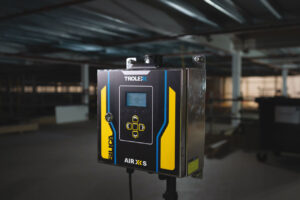
The development of ORT promises, for the first time in history, to allow users to detect and distinguish RCS in real-world settings continuously and reliably. (photo courtesy Trolex)
For example, one monitor from Trolex uses patented Optical Refraction Technology (ORT) which examines multiple detection parameters for RCS in real time, including size, symmetry and a series of optical markers unique to RCS particles. Alongside ORT, Air XS simultaneously deploys light-scatter photometry, analyzing every particle sampled and classifying them by their identifiable optical properties.
The process of ORT and light-scatter photometry to detect for RCS is similar to the way a prism separates visible light into its different colours. When a highly polarised light, like that in the Air XS, is shone through a dust sample, it measures the size and symmetry of each individual dust particle and determines which parameters coincide with that of an RCS particle.
The development of ORT promises, for the first time in history, to allow users to detect and distinguish RCS in real-world settings continuously and reliably. ORT is an entirely new development in the particulates field; by reliably detecting and reporting on RCS exposure in real time, workers have the possibility to be further protected in the workplace.
A move towards real-time RCS monitoring can give workers and businesses the opportunity to:
- Determine and implement effective dust suppression, extraction, ventilation and control measures.
- Identify the high-risk tasks when working with RCS exposure in relation to other work-related tasks.
- Improve field-based evidence to support best practices and operations.
- Carefully and effectively select correct PPE and RPE for your occupational environment.
- Optimize process methods and equipment to reduce exposure to RCS.
Revolutionized Monitoring
ORT has the potential to revolutionize one of the biggest threats to occupational health and safety worldwide. The move to ORT and real-time silica monitoring has the power to help businesses and individuals more accurately control their working environment and, specifically, where silica dust is created.
With such innovative technology, it is possible to develop more effective and responsive control structures. Improve processes, reduce costs and save lives with ORT and real-time silica
monitoring.
For more information, please visit www.trolex.com or enquire at sales@trolex.com to request a demonstration with an approved U.S. distributor.
Share on Socials!
ASSP Publishes First Standard On Heat Stress in Construction
New Professional Certificate Programs
How to Use Gas Detection Data to Your Advantage
Leaders in Industrial Hygiene
Council for Accreditation in Occupational Hearing Conservation (CAOHC)
Subscribe!
Sign up to receive our industry publications for FREE!




